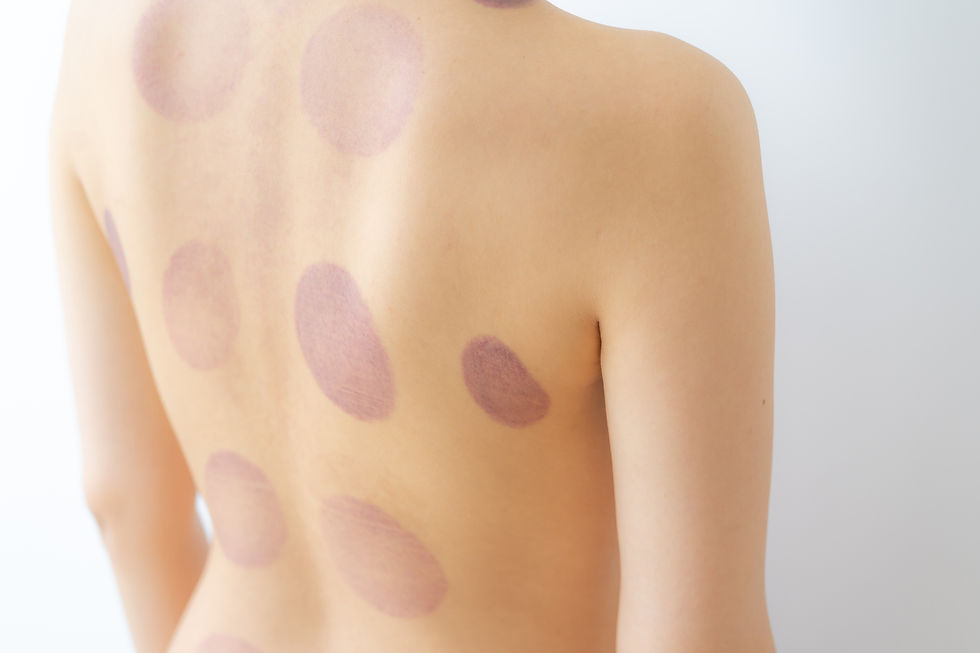Cupping Therapy: A Needle-Less Alternative to Acupuncture
- Dr. Stephanie Graham

- May 27, 2020
- 2 min read
Have you ever thought about getting acupuncture, but you aren’t thrilled about the idea of needles? While Acupuncture is generally a very well tolerated procedure, some people choose to do cupping instead. Cupping is a treatment used in Traditional Chinese Medicine (TCM) that uses glass or plastic cups to create suction over acupuncture points or areas of pain. Traditionally, fire is used to create the suction, but at BCM we use non-fire cupping. This means that the cups are safely, and painlessly applied using a hand pump. Then a heat lamp is placed over the area to warm them up, which provides therapeutic benefit.
The most common reason to get cupping is pain: upper or lower back pain, neck pain, joint pain, muscle aches or in areas of old injuries where there may be scar tissue. Cupping helps to bring blood flow and warmth to the area to help stimulate the body’s natural healing processes. In addition to pain conditions, cupping can also safely treat gastrointestinal disorders like diarrhea or IBS (Irritable Bowel Syndrome), chronic headaches or migraines, infertility in men and women, insomnia, asthma, seasonal allergies and many other conditions.
One thing to note about cupping therapy is that you should expect to get circular “bruises” where the cups were placed. Though unsightly, the bruises are generally painless and fade within a week. This is an intentional effect because the bruising indicates that the therapy is helping to break up fibrotic scar tissue under the skin, bringing in blood flow and decreasing stagnation. As you repeat cupping, the bruises become less intense over time because you will have less stagnation. If you look up photos of Michael Phelps, the Olympic swimmer, you can see these types of “bruises” or marks on his body from cupping therapy. Many patients find cupping to be a safer alternative to conventional treatment such as pain medications or steroid injections.
Cupping can be used as a stand alone therapy or may be added to an acupuncture visit. BCM is now offering appointments for cupping. You can schedule here. Let us know if you have any questions about cupping therapy and how it may benefit you.
Note that cupping is not appropriate for everyone, especially those patients who are on blood thinning medications.





Comments